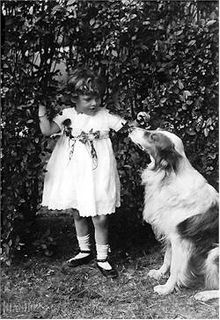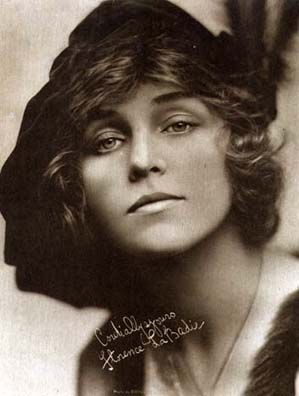
Florence La Badie was an American-Canadian actress in the early days of the silent film era. She was a major star between 1911 and 1917. Her career was at its height when she died at age 29 from injuries sustained in an automobile accident.
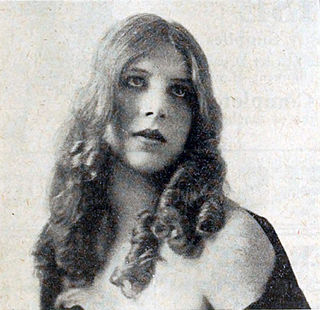
Valda Valkyrien was a Danish silent film actress.

Jean, also known as the Vitagraph Dog (1902–1916), was a female collie that starred in silent films. Owned and guided by director Laurence Trimble, she was the first canine to have a leading role in motion pictures. Jean was with Vitagraph Studios from 1909, and in 1913 went with Trimble to England to work with Florence Turner in her own independent film company.

Helen Badgley was an American child actress of the silent film era.

The Painted Hills, also known as Lassie's Adventures in the Goldrush, is a 1951 drama western film produced by Metro-Goldwyn-Mayer (MGM) and directed by Harold F. Kress.
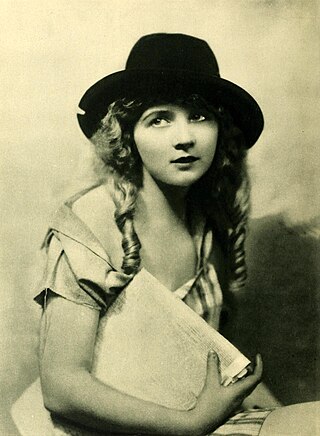
Gladys Leslie Moore was an American actress in silent film, active in the 1910s and 1920s. Though less-remembered than superstars like Mary Pickford, she had a number of starring roles from 1917 to the early 1920s and was one of the young female stars of her day.

Jack Harvey was an American film actor, director and screenwriter, noted for his short films of the silent period.

Shep's Race with Death is a 1914 American short silent drama film, directed by Jack Harvey for the Thanhouser Company. It stars Shep the Dog, Mrs. Whitcove, and J.S. Murray. The film about a "collie dog [who] wins a race with death, saves the life of his mistress, and causes a happy family reunion", was released on November 1, 1914.
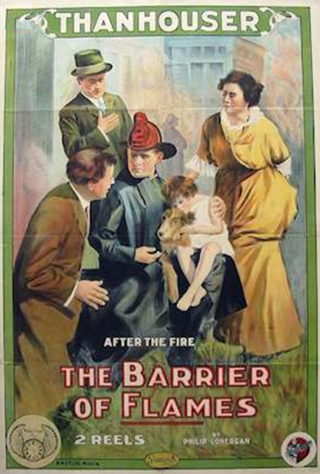
The Barrier of Flames is a 1914 American short silent drama film directed by Jack Harvey. It stars Shep the Dog, Helen Badgley, and Morgan Jones. The film is about a child saved from a fire by her devoted collie.

Shep, or The Thanhouser Dog or Shep the Dog, was a male collie dog who starred in a number of silent films made by the Thanhouser Company.

Morgan Jones was an American silent film actor and writer.

St. Elmo is a 1910 American silent short drama produced by the Thanhouser Company. The scenario was adapted by Lloyd Lonergan from Augusta Jane Evans's 1866 novel of the same name. Frank H. Crane and Anna Rosemond play the leading roles in the simplified plot that was reliant on inter-titles to tell the story. The film follows St. Elmo who is engaged to his cousin Agnes, being betrayed by his friend Dick Hammond who has an affair with Agnes. St. Elmo challenges and kills Hammond in a duel. A young girl, Edna witnesses the duel and leads Agnes and the sheriff off the trail. St. Elmo disappears and returns five years later to woo Edna. She rejects then accepts his affections only to stop him from committing suicide. The production was met with mixed reviews by critics, but was successful. The film is presumed lost.
The Thanhouser Company was one of the first motion picture studios, founded in 1909 by Edwin Thanhouser. It operated until 1920. It produced over 1,000 films, but several dozen of the films were of small filler subjects, educational or documentaries. Many of these smaller subjects were listed as a quarter or half a reel in length and received very little critical review or analysis by film critics and the media.
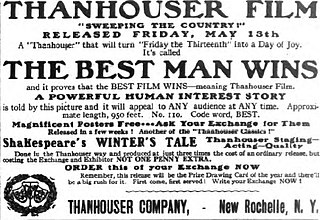
The Best Man Wins is a 1910 American silent short drama produced by the Thanhouser Company. The film features Thanhouser's leading players Anna Rosemond, Martin Faust, Frank H. Crane and Marie Eline in a drama about morality. Two suitors are vying for the hand of Julia Seaton and propose to her on the same day, but she asks for a month to decide between them. In the time, the caliber of both men are tested when asked by a young girl, named May, to help her dying mother. The doctor refuses to help, and the lawyer offers his assistance, but her mother soon dies. The orphan is taken in by the Seaton family and personally attests to the character of both men when Julia Seaton has to choose between her suitors.
Thelma is a 1910 American silent short drama film produced by the Thanhouser Company. The story was based on Marie Corelli's 1887 novel of the same name, it focuses on a Norwegian maiden who meets Sir Phillip and the two are wed. Lady Clara conspires to ruin the marriage and tricks Thelma with a letter purported to be from her husband. Thelma returns to Norway and to the death of her father. Thelma, alone in the world, prays at her mother's grave for strength. Sir Phillip searches for Thelma, ultimately finding her, uncovers the tricks which have been played on them and they fall back in love. Released on June 21, 1910, the film was met with praise in The Moving Picture World. An incomplete print of the film survives in the Library of Congress archives.

Uncle Tom's Cabin is a 1910 American silent short drama produced by the Thanhouser Company. The film was adapted by from the 1852 novel Uncle Tom's Cabin by Harriet Beecher Stowe. The plot of the Thanhouser production streamlined the actual story to portray the film over the course of a single reel. The film was released on July 26, 1910, on the same day that Vitagraph released the first reel of their own three reel version of Uncle Tom's Cabin. This prompted the Thanhouser Company to advertise against the Vitagraph film by referring to the other as being overly drawn out. The film garnered mixed, but mostly positive reception in trade publications. The film is presumed lost.

The Mad Hermit is a 1910 American silent short drama film produced by the Thanhouser Company. The story focuses on Harry Willard, who becomes a hermit after his wife and daughter leave him. He spends a quarter of a century in isolation, but he stumbles across a runaway carriage and the woman tosses her baby to him. He runs into the wilderness and prepares to kill it, but he stays his hand when he sees the baby's locket. The parents survive the carriage crash and seek out the hermit, and it is revealed that the baby's mother is the daughter of Harry Willard. Created by a staff of twenty, it was the first film to be produced by the Thanhouser Company. The film was released on August 9, 1910, after the success of the company was ensured, and met with positive reception by critics. The film is presumed lost.

The Heart of Ezra Greer is a 1917 American silent drama film produced by the Thanhouser Company and directed by Emile Chautard. The film focuses on Ezra Greer, a successful middle-aged man who searches for his college age daughter, Mary. The wayward Mary was romanced and abandoned by Jack Denbeigh, later bearing his child. Once Ezra becomes broke he finds employment as the valet for Jack Denbeigh. After Jack's engagement to a cabaret girl, Mary becomes upset and leaves her child at Jack's home. Contrary to Jack's wishes, Ezra keeps the child and Jack ultimately reveals that the child is his own. Ezra convinces Jack to make things right and Ezra convinces the cabaret girl to leave Jack. After a carriage accident in which the baby is injured, Ezra and Jack rush to the hospital and find Mary as a nurse crying over the child. The film ends with the marriage of Jack and Mary. The film was released by Pathé on October 7, 1917. The film was the final release from Thanhouser and was deemed to be an average film by most reviewers. Criticism for the film hinged on far-fetched coincidences to drive the plot. The film is presumed lost.
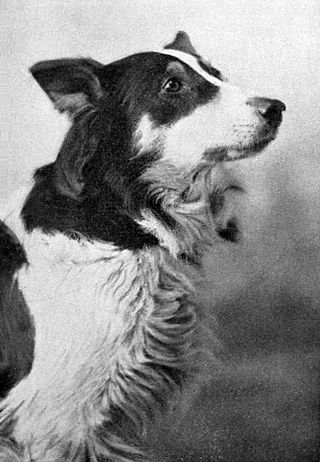
Jean and the Calico Doll is a 1910 short film directed by Laurence Trimble for Vitagraph Studios. It is the first film starring his own dog Jean, a female tri-color collie soon to be famous as the Vitagraph Dog. The drama marks the film debut of Helen Hayes, the first of two films she made with the famous dog in 1910.
